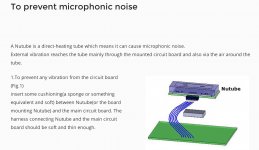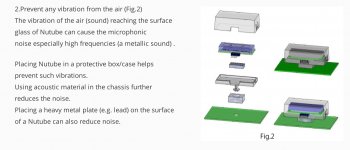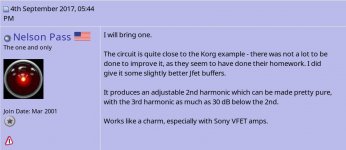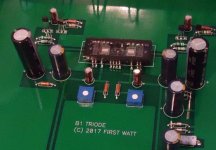I'm listening to headphones through an amp with the Korg tube in it now and this design is really tempting.
These tubes are pretty microphonic so some sort of cushioning for the mount might be helpful. When the delay relay kicks on the sound on the amp I have I get a high pitch 'ching' sound through the headphones if I don't have audio on it yet. Turning the power switch off gets an even louder sound.
I'm not sure what the side effects of connecting the tube with wires rather than just the pins would have but that would not only help but also allow placement of the tube so it could be seen glowing.
These tubes are pretty microphonic so some sort of cushioning for the mount might be helpful. When the delay relay kicks on the sound on the amp I have I get a high pitch 'ching' sound through the headphones if I don't have audio on it yet. Turning the power switch off gets an even louder sound.
I'm not sure what the side effects of connecting the tube with wires rather than just the pins would have but that would not only help but also allow placement of the tube so it could be seen glowing.
Since that post I received a nice note from Mr. Tohyama of Korg,
and he sent me a picture of the preamp on display at RMAF.
Thanks a bunch Mr Pass !
What about RMAF acronym is ?
Was the presentation of Designers work who use Nutube i guess.
Please 2SK370 or 2SK170 what is Idss range for B1 Triode.
Rocky Mountain Audio Fest.
I bought a couple of Pete Millet's on ebay to round out my stock,
and they arrived quickly enough.
The data sheet talks about microphonics, but I tapped away on mine
and didn't see it in the residual thd/noise. Could be overly cautious Japanese,
but they do recommend an absorptive pad.
The other possibility, look at the impedances involved - load resistor is almost
400K, and can probably pick up the electrical noise from any switching.
I bought a couple of Pete Millet's on ebay to round out my stock,
and they arrived quickly enough.
The data sheet talks about microphonics, but I tapped away on mine
and didn't see it in the residual thd/noise. Could be overly cautious Japanese,
but they do recommend an absorptive pad.
The other possibility, look at the impedances involved - load resistor is almost
400K, and can probably pick up the electrical noise from any switching.
On the buffer that I built with Millet's PCB I have to really tap the tube hard and have the volume full with audio paused to hear any hint of sound.
With the headphone amp also using his PCB if I have the audio paused, volume at 1/4 and just brush my finger against where the headphone is plugged in I get a faint ringing sound like tapping on a crystal glass. Contact with any component on the PCB generates a similar sound. If I tap directly on the tube with the volume on I can hear the 'cling' in the background of the music.
With the headphone amp also using his PCB if I have the audio paused, volume at 1/4 and just brush my finger against where the headphone is plugged in I get a faint ringing sound like tapping on a crystal glass. Contact with any component on the PCB generates a similar sound. If I tap directly on the tube with the volume on I can hear the 'cling' in the background of the music.
My 6p1 microphonic as I also have Millet's headphone board and I can heard a zinging sound whenever I turn the volume or just touch the chassis. Transferring the board to a wooden box reduce the zinging sound by quite a bit, probably the previous metal case resonates easier.
When mounting the 6p1 best to try to isolated it as much as possible, IMO.
When mounting the 6p1 best to try to isolated it as much as possible, IMO.
BTW, is the input stage before the 6p1 really necessary?
As I have seem a Japanese schematic with dual 6p1 pre channel running at full 80V plate (with 620k plate resistor and pin 9 has 43k parallel with 330uF to ground) and both the grid is directly connected to a 100k pot.
As I have seem a Japanese schematic with dual 6p1 pre channel running at full 80V plate (with 620k plate resistor and pin 9 has 43k parallel with 330uF to ground) and both the grid is directly connected to a 100k pot.
Some people made plexiglass boxes (laser cut or 3D printing ?)
but frankly, who knock the glass or shake his preamp in everyday listening.
My 2A3 DHT mono blocks amplifiers or triode preamp are quiet ones.
With SMPS outside the box result is very little mechanical vibrations and risks to get microphonic phenomena.
but frankly, who knock the glass or shake his preamp in everyday listening.
My 2A3 DHT mono blocks amplifiers or triode preamp are quiet ones.
With SMPS outside the box result is very little mechanical vibrations and risks to get microphonic phenomena.
Attachments
-
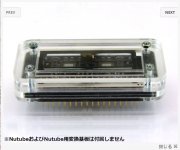 A2A67D34-23E3-4B56-A7FA-101B01B45BA9.JPG281.4 KB · Views: 1,396
A2A67D34-23E3-4B56-A7FA-101B01B45BA9.JPG281.4 KB · Views: 1,396 -
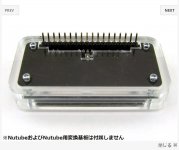 AF07CF09-47A0-4801-9ECB-F7C9E04077C1.JPG234.2 KB · Views: 1,529
AF07CF09-47A0-4801-9ECB-F7C9E04077C1.JPG234.2 KB · Views: 1,529 -
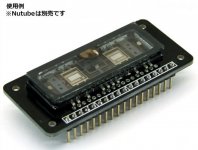 2596B3D1-5B75-4091-9B1B-D2014C1303BF.JPG299.8 KB · Views: 1,614
2596B3D1-5B75-4091-9B1B-D2014C1303BF.JPG299.8 KB · Views: 1,614 -
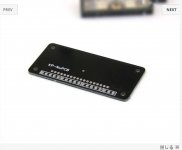 F6D02F7C-3E58-4C9C-8FB5-797F1EE2C30A.JPG114.9 KB · Views: 5,433
F6D02F7C-3E58-4C9C-8FB5-797F1EE2C30A.JPG114.9 KB · Views: 5,433 -
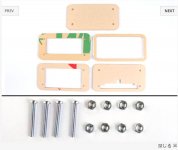 65AD2B13-5523-44E4-A7A8-3A487D6E9423.JPG196.1 KB · Views: 5,558
65AD2B13-5523-44E4-A7A8-3A487D6E9423.JPG196.1 KB · Views: 5,558 -
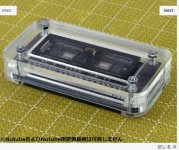 B5D38886-867B-450F-BA89-12F7E949D082.JPG345.7 KB · Views: 1,564
B5D38886-867B-450F-BA89-12F7E949D082.JPG345.7 KB · Views: 1,564 -
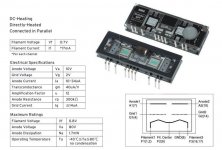 D90723DF-FE6D-47F5-9AD9-F14B9D439FFE.JPG110.8 KB · Views: 1,568
D90723DF-FE6D-47F5-9AD9-F14B9D439FFE.JPG110.8 KB · Views: 1,568 -
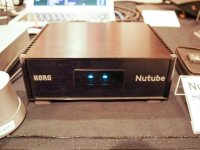 EB19D30F-B280-4EF8-9D0B-59C8F3DA2033.JPG286 KB · Views: 1,915
EB19D30F-B280-4EF8-9D0B-59C8F3DA2033.JPG286 KB · Views: 1,915 -
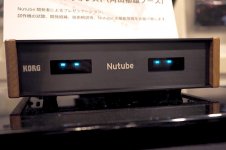 FE191C04-70E4-4396-8E20-BA9EE32A87C0.JPG78.2 KB · Views: 1,963
FE191C04-70E4-4396-8E20-BA9EE32A87C0.JPG78.2 KB · Views: 1,963 -
 E9EDF4A9-A042-4FB4-9142-A28C132E9AE3.JPG78.3 KB · Views: 1,690
E9EDF4A9-A042-4FB4-9142-A28C132E9AE3.JPG78.3 KB · Views: 1,690
as for subminiature tubes, ringing could be a problem but easilly to solve with damping material.
JP
JP
...
but frankly, who knock the glass or shake his preamp in everyday listening.
...
Those who put the volume pot in the same chassis as the 6p1 tube. Mine is a step resistor volume, so there is some very very soft click for each step of turn. The zinging lasts a few seconds and sounds like high pitch fairy dust fading away.😛
Use soft rubber pads can avoid Nutube mechanical vibrations coupling with the other elements
can erase or greatly minimise microphonic effects, especially with step resistors attenuators imho.
Beautiful turquoise light glow on the front panel is possible with mounting on the small pcb.
can erase or greatly minimise microphonic effects, especially with step resistors attenuators imho.
Beautiful turquoise light glow on the front panel is possible with mounting on the small pcb.
Attachments
-
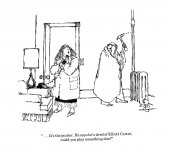 5A0203A6-14CE-46E8-8419-C080B22ADB75.JPG608.7 KB · Views: 4,711
5A0203A6-14CE-46E8-8419-C080B22ADB75.JPG608.7 KB · Views: 4,711 -
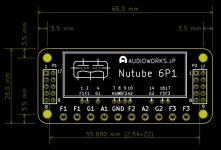 EC652D04-92F7-4D9B-8635-C433A9B39B68.JPG109 KB · Views: 4,687
EC652D04-92F7-4D9B-8635-C433A9B39B68.JPG109 KB · Views: 4,687 -
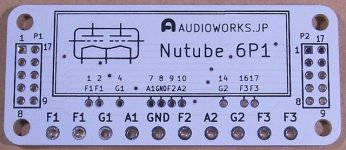 553AAF0F-2B54-4C18-B182-195A20C086B3.JPG85.4 KB · Views: 4,576
553AAF0F-2B54-4C18-B182-195A20C086B3.JPG85.4 KB · Views: 4,576 -
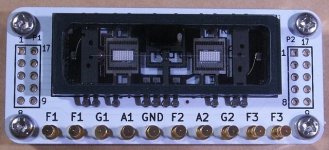 04A8AB79-42D5-46D6-AE7D-98082750BB5C.JPG93.8 KB · Views: 4,514
04A8AB79-42D5-46D6-AE7D-98082750BB5C.JPG93.8 KB · Views: 4,514 -
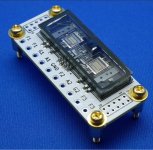 CFC6FCFC-C8B6-41B4-86BE-818E5510FE94.JPG137.9 KB · Views: 4,540
CFC6FCFC-C8B6-41B4-86BE-818E5510FE94.JPG137.9 KB · Views: 4,540 -
 E9EDF4A9-A042-4FB4-9142-A28C132E9AE3.JPG78.3 KB · Views: 1,108
E9EDF4A9-A042-4FB4-9142-A28C132E9AE3.JPG78.3 KB · Views: 1,108 -
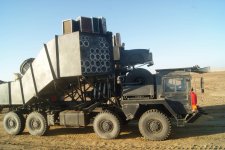 99432A9E-24F3-4D4A-B687-2ABEE432C05E.jpg532.1 KB · Views: 1,317
99432A9E-24F3-4D4A-B687-2ABEE432C05E.jpg532.1 KB · Views: 1,317 -
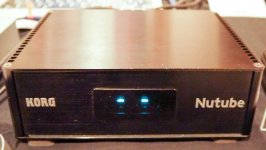 D512C8C7-8EDE-4FC7-974A-1606B31CB76F.JPG559.1 KB · Views: 1,492
D512C8C7-8EDE-4FC7-974A-1606B31CB76F.JPG559.1 KB · Views: 1,492
Now, would this one count more as a buffer or a preamp. Ocassionaly I was thinking about such a preamp, with a tube sandwitched between two j-fet buffers, due to a fact that such a tube would need low input impedance but would have high output impedance + eeny weeny current to drive anything but the buffer. But the point was that such a tube wiuld have a high gain, 15 db or so, in order to be used with a mosfet follower (F4 or similar). But, I see that this circuit is neither a buffer nor really a high gain preamp. Then, what it is aiming at? 🙂
Most firstwatt amps don't need a high gain preamp.
6dB is usually enough.
Regarding F4 that really depends on your speakers and how loud you listen to music.
6dB is usually enough.
Regarding F4 that really depends on your speakers and how loud you listen to music.
But, I see that this circuit is neither a buffer nor really a high gain preamp. Then, what it is aiming at? 🙂
@ Vix
Why you think is not a buffer or + 10 dB gain preamp?
In the article, Mr Pass write he voluntarily limited the gain.
Try maybe read the article first. Bonus feature is sound processor you can tweak your distortion and phase
for the excellent sound with small direct heated triodes 30 000 hours of work. New technology what else ?
Attachments
I assumed that it doesn't have enough gain (I thought 10 db at most) or that it can't swing enough voltage to drive a mosfet follower (like F4).
But if it can, then.. 😎
But if it can, then.. 😎
So the fun begins with this one 🙂
Any comments on the sound?
Being primarily designed for instrument effects or amps I would not be surprised if it behaves a bit like "spice"
By the way, isn't a cap required at the output of the triode?
Any comments on the sound?
Being primarily designed for instrument effects or amps I would not be surprised if it behaves a bit like "spice"
By the way, isn't a cap required at the output of the triode?
I assumed that it doesn't have enough gain (I thought 10 db at most) or that it can't swing enough voltage to drive a mosfet follower (like F4).
But if it can, then.. 😎
If your speakers are 95dB or better than you don't need to swing 20V peak.
6V peak is quite loud.
Too many variables to set concrete rules.
Any comments on the sound?
Members have his direct expertise me i know this short demo
Nutube preamp demonstration
Papa B1 are not the same and "spice" twekable 😀
- Home
- Amplifiers
- Pass Labs
- B1 with Korg Triode
